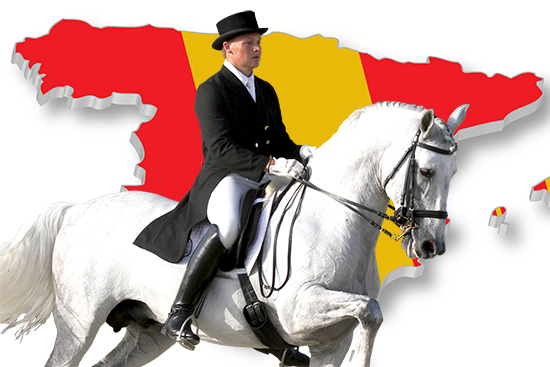 Suzy Jarrat meets an Australian dressage rider who is finding his own way in the world of dressage…
Suzy Jarrat meets an Australian dressage rider who is finding his own way in the world of dressage…
Anthony Pelling was only 14 when he rode a canny old stallion in Portugal. Nuno Oliveira had trained the horse, his name was Dodge and he knew how to make a student’s life hell. Anthony’s muscles were sore and he was a long way from home but he wasn’t going to give up.
Nine years later the boy from Theodore in Central Queensland is head rider for a stud in Spain successfully training horses all the way to Grand Prix. He speaks and writes fluent Spanish and is the first Australian ever to compete at SICAB, a prestigious international horse show exclusively dedicated to Spanish purebreds.
It was because of this breed that young Anthony had gone to Portugal.
His parents Ron and Mary-Lou purchased their first pure Spanish horse in 1998 – Rangemore Silverado. He stood with the Brahmans and performance horses at their Willtony Stud on the Dawson River south of Theodore.
Anthony would go to clinics with his mother where she trained under Jose Mendez, now based in New South Wales, and with Nadine Francois a former student and family friend of the late classical dressage master Nuno Oliviera. (This Belgian-born trainer based in Portugal). Anthony got the taste for dressage. He was invited to train under Nadine for three months in Portugal.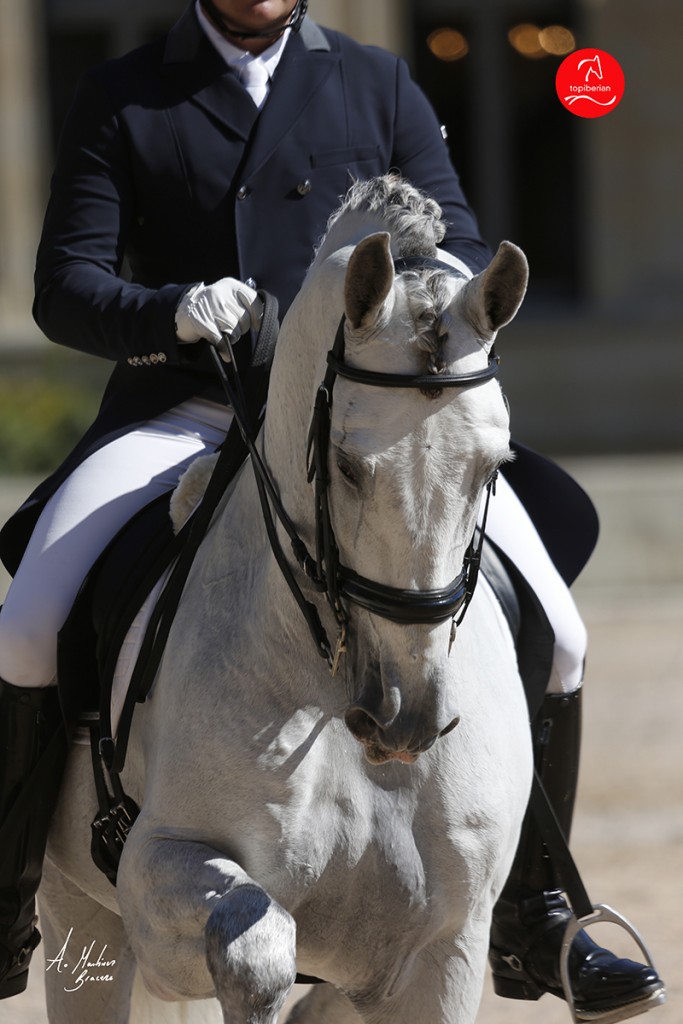
“The first two were very difficult,” he recalled, “because I had to ride without stirrups. With my position changing and evolving every day my muscles used to kill me at night but pushing through it really made me focus and try harder. Dodge, who was over 20 years old, knew every trick in the book and I’d drag my feet to the stable on the mornings I had to ride him. However, by the end of three months, I was able to do pretty much all the movements of a Grand Prix test. The only thing I had problems with were the one-time changes.”
Once back from Portugal, Anthony continued with his studies and playing A grade rugby union. He was awarded an equestrian scholarship at the Kooralbyn International School. It closed down during his first year there, reopening a couple of years later. Transferring to Scotts School Warwick he helped map out the school’s equestrian program and in his spare moments took lessons with the late Eleanor Russell. During this time he met Ignacio Candau who had come to Australia from Seville to meet breeders of Spanish horses, such as Ron and Mary-Lou Pelling, and to learn English. Little did the Pellings know then that their son was to become Candau’s head rider.
Ignacio spent his first night in Theodore fighting fires (had he arrived three years later he would have been battling floods).
“We got on very well together and he invited me to Spain. Once I was there I knew what I wanted to do with my life – to become a professional dressage rider and competitor. We went to the Royal Andalusian School of Equestrian Art in Jerez which is where I met Rafael Soto.”
“He was one of my major influences in trying to enter that school, together with one of his students, Jose Antonio Mena, who I used to sit and watch for hours.”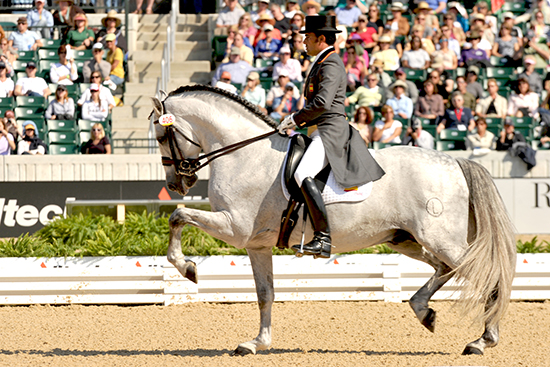
Jose Antonia Mena and Norte
Mena remains one of Anthony’s inspirations.
“He’s a very good rider – professional and serious. I’ve seen him evolve from the early days when he first worked with Norte to his riding the stallion at WEG last year.”
Rafael Soto commented when he first saw Anthony on the Candau horses ‘this man seems very strong yet he’s so gentle a rider’. He asked why he was so big and was told that Anthony was a rugby front rower.
For the record, Anthony is about 84 kilos and 182 centimetres tall (that’s 13 stone and 6 feet).
“I decided to have Spanish lessons and sit for the Royal School exams which consist of both theory and practical elements. If you can’t pass the theory you can’t take the other. The Spanish text books covered everything to do with horse care and management, training techniques and dressage history.”
He took the exam and failed. He returned to Australia, obtained a one year student visa and went back to Seville.
He studied the language with a vengeance, continued riding at Candau and every week drove for an hour-and-a-half for a lesson with Rafael Soto in Jerez.
“I began showing a lot of improvement,” said Anthony. “I was understanding what dressage was and he opened my mind to new methods. I was learning not just how to ride but to train. I rode with Rafael for nearly three years.”
He had two more attempts at the exam.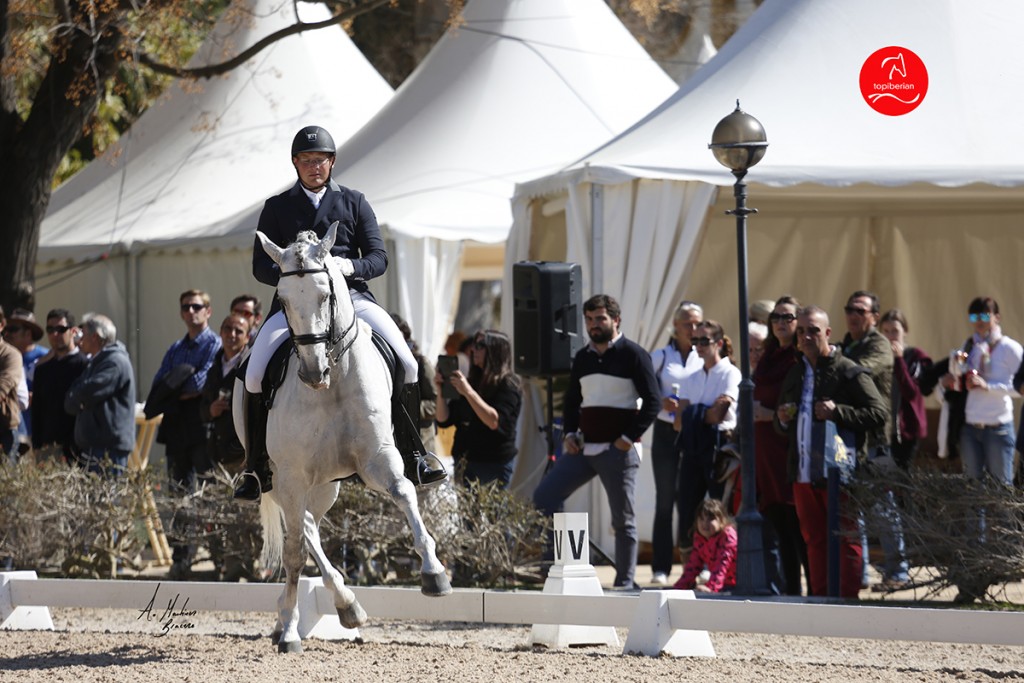
“Both times I passed the theory and the practical with awesome percentages but for some strange reason I’d always just miss out by one or two points – the school only takes 6 people a year. One time I was told I was ‘too big’ except that a couple of years later the school accepted two riders who were both bigger than me.”
Perhaps it had something to do with not being Spanish… But it all worked out for the best because Candua gave Anthony papers allowing him to legally stay in Spain and his work began in earnest.
His routine at Candau varies:
“Like now in summer I begin work at 7am ‘til about 1.20pm, have a break because it’s so hot then ride again from about 6pm to 9.30pm. I mainly only ride stallions, however in the last year I’ve broken my first mare. She’s very good and it’ll be interesting to see what we can accomplish.”
He’s presently training with Holland’s Bert Rutten.
“I also work with Joaquin Legarre Sanz who has his stable in Estepona. He comes to Candau once a month for two days and works with me and all the horses I have. Every two or three months I go down to Soto Grande for a three day clinic with Bert. Joaquin comes too and then we work together on how we can evolve and perform better.”
“Every school has its way of doing things. There are so many methods to help with training dressage horses these days. Not everything works on all horses, some need a specific type of work to build certain muscles; you have to assess how much you use of that technique and whether the horse can handle it. It all comes back to how professional and intelligent the rider is. You could say that the German school is more about having its horses straight and on the bit, the general outline of the Spanish horses is rounder. Ours do exhibitions which involve lots of collected movements and the school doesn’t have ten years to train every horse to enter these exhibitions so their frames, earlier on in training, I believe to be more round.”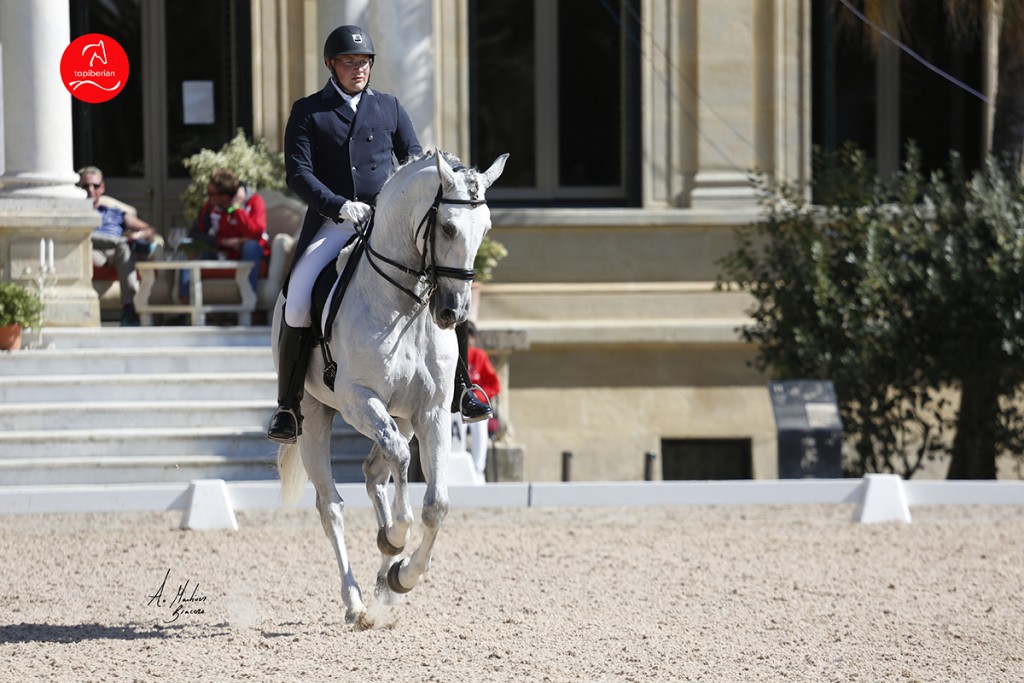
“Anyway, a good horse is a good horse whether it’s Spanish, German, English or French. The difference I feel when riding ours is how gifted they are in piaffe and passage. Also they tend to be easier to train as they have a very good nature but, of course, you’ll always find some bad nuts in the bunch.”
He doesn’t try to emulate any particular rider when training and competing.
“I do the best I can in a way which allows me to achieve my goals with the horse I’m on without causing problems, confusion or injury. Not everyone has a picture perfect position but if it allows them to effectively communicate with their horses and achieve harmony, and they have an open mind, I don’t think you need to change what you’re doing to look like someone else. I know and respect a lot of great riders who are at a level I wish to achieve, however my ambition is not to copy them but to stand apart and try to be better.” u
His work takes up so much time his social life is less than hectic.
“Often it’s almost non-existent, but I do go out and have tapas and a few beers in Moron, the small town where I live. I have a lot of close friends here who ride as well. If I was at home I’d have to travel a long way to find another guy like me who rides dressage and finds it interesting.”
Undoubtedly the town of Theodore is not the hub of Doma Clásica although Anthony’s mother definitely shares his passion for the art.
His 27-year-old brother, William, showjumped as a kid but dressage is not his thing. Working as a diesel fitter at Moura Mine he gives the impression of being a bit of a larrikin action man. Whilst holidaying in Canada he was bitten on the leg by a wild bear, is a fan of local band “Hibernation Sickness” and can be seen on You Tube fighting in Fred Brophy’s Boxing Tent. (This is the only tent of its kind in Australia, and it’s restricted to Queensland and the Northern Territory, everywhere else these fights are illegal. Spectators come from far and wide to watch ‘Tiny Tim’ grapple ‘The Bear’ or ‘White Lightning’ wipe out ‘Baby Rabbit’. William, in barefeet, was aptly named ‘Theodore Thunder’ – he won.)
“My brother goes at everything 110 per cent,” remarked Anthony.
Anthony, too, has immersed himself to the maximum – in dressage. In his earlier years in Spain his competition successes were with young horses; in the last twelve months he has made his GP debut.
“Last year I competed Babieca at Prix St Georges, we placed sixth at SICAB, which is the national final for the Spanish horse. Then this year in my first CDN*** in Montenmedio I came fifth with him in the Grand Prix and Africano also did well. A few weeks ago in Estepona I placed second and third in the Inter 1 and GP Kürs.
“I’m really happy with them as both stallions are very young and just starting in these levels. Babieca is nine and Africano seven.” (And blind in one eye added his mother).
He has five more major competitions until the end of the year and in March 2012 will be taking part in the Sunshine Tour.
“This will be my first international. I guess I’ll have to approach the Australian Equestrian Federation in order to ride in international competition, I don’t think they even know I’m over here.”
Maybe it would be simpler for Anthony, who admits to being ‘Spanglish’ these days, to become a naturalised Spaniard.
“I’ve thought about it and will consider it further. It would have a lot of advantages such as making travelling easier.”
This young man has certainly come far since scoring second place in the 1D at the Warwick Show & Rodeo eight years ago.
“I always thought my life would take me overseas but I never knew how or for what reason. It’s funny looking back to when I was riding at pony club and in local gymkhanas and so gratifying to now be riding at Grand Prix in Spain at national level. And I’ve done it on horses completely trained by me – that’s the greatest feeling of all.”
This article first appeared in the November 2011 issue of THM.




What an achievement Anthony your Mother is very proud of you.
It is a privilege to call her a friend.Irene and myself will never forget when we met and also the pleasure of meeting the magnificent Silverado.